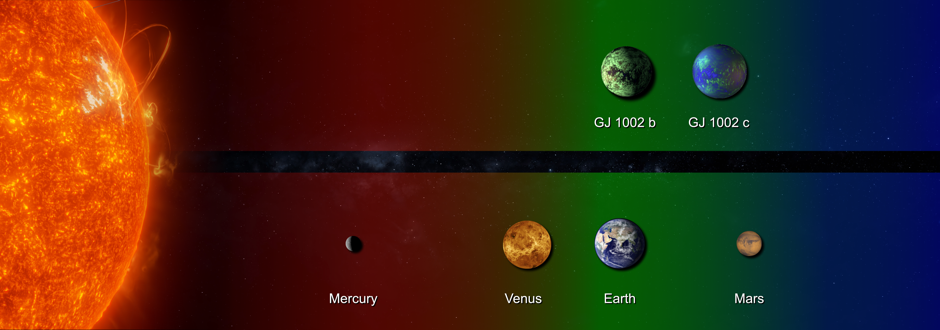by Alessandro Sozzetti
An international group of researchers, which also includes Alessandro Sozzetti and Mario Damasso of Astrophysical Observatory of Turin (INAF-OATo), has discovered the presence of two planets with masses comparable to that of the Earth in orbit around the star GJ 1002, a red dwarf 16 light years away from us. With only 12% the mass of our Sun, GJ 1002 is a twin sister of Proxima Centauri, our closest stellar neighbor.
The two planets, GJ 1002 b and GJ 1002 c, complete their orbits in 10 days and 21 days, respectively, and this makes them fall exactly within the so-called habitable zone, within which water could be found in liquid form, and which is located in the immediate vicinity of the star due to its low luminosity.
The discovery of the two planets was only made possible based on the combined observations, which lasted almost four years between 2017 and 2021, of the ESPRESSO instruments (installed at ESO’s Very Large Telescope, in the Chilean Andes) and CARMENES (installed at the 3 .5 meters in diameter of the Calar Alto Observatory, Spain).
The proximity of the star to our solar system makes both planets, GJ 1002 c in particular, excellent candidates for atmospheric characterization by studying their reflected light or thermal emission. We expect to be able to investigate the presence of an atmosphere around GJ 1002 c, looking for oxygen in particular, using the ANDES spectrograph, an instrument whose design is led by Italy, in which INAF is heavily involved and which will operate in the future on ESO’s Extremely Large Telescope, the largest telescope in the world with its 39-metre-diameter main mirror, under construction in the Chilean desert.
Read the article in Astronomy & Astrophysics: “Two temperate Earth-mass planets orbiting the nearby star GJ 1002”, led by A. Suárez Mascareño including Alessandro Sozzetti and Mario Damasso (preprint in ArXiv).
Link to Media INAF article (in Italian): “Due “Terre” potenzialmente abitabili a 16 anni luce”

